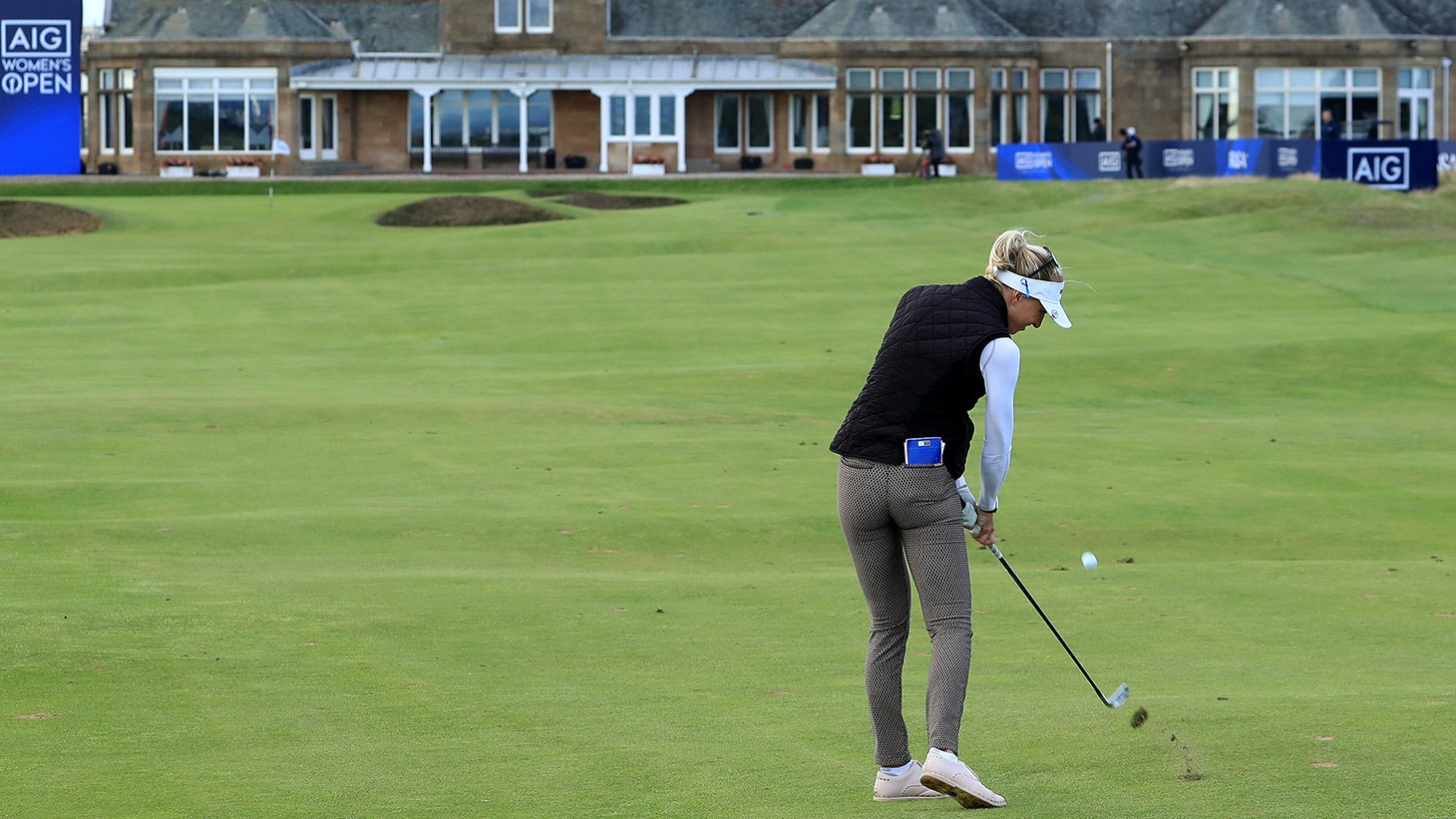
This week, the final major on the LPGA calendar, the AIG Women's Open, will be contested on the Championship Course at Carnoustie Golf Links. These are likely to be the toughest conditions that players will face all season. The lengthy layout is a challenge even in calm conditions, but calm days are rare along this stretch of eastern Scottish coastline. Players can face alternating spells of cold, hot, wet and dry weather – all in the same round. Because of the zig-zag orientation of holes, no more than two holes ever play in the same direction on the Championship Course, making judgement of the wind even more difficult. Carnoustie demands a wide variety of shots if players are to avoid the deep pot bunkers, out-of-bounds stakes and burns – the often hidden, canal-like streams that snake throughout the course.
To manage these challenges and especially the wind, players will need to control the trajectory of their shots. As Mike Madson, Director of Aerodynamics & Research Engineering told us, wind speed increases as elevation increases. So that 10 mph wind that you feel on your face is actually blowing much harder at the 80-, 90- or 100-foot height that your golf ball climbs to. This is why golf wisdom tells us to knock the ball down in windy conditions. The lower you can flight the golf ball, the weaker the wind is that it will fly through – and the less your golf ball will be blown short, long or off-course.
If the wind is strong enough this week at Carnoustie, some players may even keep the driver in the bag on some tees – in favor of a stinger shot. The stinger is an extreme version of a shot that is purposely hit on a low trajectory. Not too long ago, Mike shared some of the physics behind this useful specialty shot. Check out the video below to learn more:
Just how much can the wind effect shots at Carnoustie? Mike told us that in a 20-mph headwind, LPGA players hitting driver could lose as much as 40-50 yards off the tee! Perhaps more importantly is what can happen in crosswinds.
"The wind exaggerates everything," Mike explained. "In a 20-mph crosswind, tour players' tee shots could be blown sideways as much as 30 yards off-line. In severe wind, the golf ball becomes even more important. Any inconsistency in the aerodynamics will be exaggerated as wind speed increases. Under major championship conditions, if the ball isn’t designed and manufactured for consistent flight, you can get into trouble through no fault of your own."
To gain that level of consistent flight, over 80% of the field at this year's AIG Women's Open will be trusting a Pro V1 or Pro V1x golf ball. With their new dimple designs and optimized aerodynamics, the 2021 Pro V1 and Pro V1x are simply the most consistent and best performing golf balls – in any conditions – that Titleist has ever designed.
So, if you're playing in nasty wind conditions, make sure to tee up a new Pro V1 or Pro V1x. And give the stinger a try. Here are some keys to remember, courtesy of Titleist staff member and 2021 PGA Teacher of the Year, Mark Blackburn:
• Goal: Launch the golf ball between 5° and 8°
• Position the ball back in your stance (right of center for a right-handed golfer)
• Open your stance slightly to keep the club face square to the target
• Feel pressure in your lead leg and foot and rotate around the lead leg
• Make an abbreviated, 3/4 swing
• Rotate through the shot and keep the handle ahead of the clubhead
• At impact, the shaft must be leaning forward to deliver less dynamic loft and launch the ball low